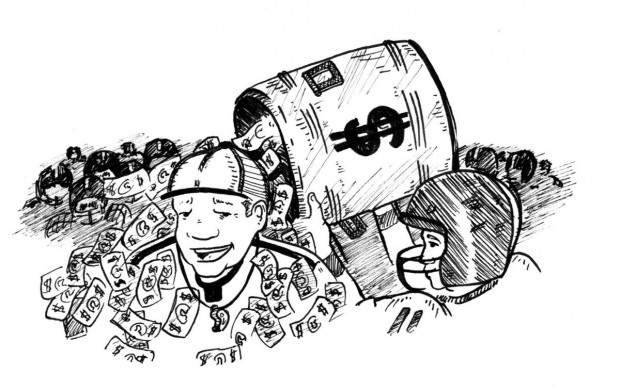Despite nationwide belt tightening, salaries for college athletic staff have been increasing. In some cases, this has given head coaches a higher salary than academic deans, and many are questioning whether universities are valuing the gridiron over the classroom.
Universities in the Bowl Championship Series saw dramatic salary increases for their athletics faculty — dramatic being a kind understatement. Inside Higher Ed reported football coaches saw an approximate 97 percent increase in their salaries, and athletic coach salaries rose by about 78 percent, while academic faculty saw their salaries rise by only 15.8 percent.

David Delgado/The Daily Cougar
Once percentages have been swapped out for actual numbers, the gap becomes even more apparent. Inside Higher Ed reports also show that in 2006, instructors at Southeastern Conference universities, such as Texas A&M, were paid $70,886 annually. This figure rose by 15.5 percent to $81,758 by 2011. In that same time frame, the coaching staff started out with a salary of more than $3 million and ended in 2011 at $6.9 million.
That is the salary that coaches at A&M can expect now. According to the Texas Tribune, former UH coach Kevin Sumlin traded in his red and white for Aggie maroon and a $2 million salary. After an 11-2 season, coaching a Heisman Trophy winner and a Cotton Bowl victory he was given a raise to $3.1 million. His boss, Texas A&M Athletic Director Clarence “Bill” Byrne makes $690,000, according to the Texas Tribune. Both of them are making much more than the provost of their university, Karan Watson, who makes $360,000. Combined, however, these heavy earners at TAMU are like peasants to Mack Brown, the head coach at the University of Texas, whose salary is a whopping $5.2 million.
Student athletics builds an identity, builds the student community and builds brand notoriety for its university. Brand notoriety attracts more students, and more students means more funding. More funding means more money for the university to spend on everything overall, including more housing, better facilities and even improved professor salaries.
This doesn’t excuse the fact that a coach can be a millionaire while professors are making pennies in comparison. It says something about how we as a society have come to value sports as opposed to education. It is a sad reality when UH is hidden in obscurity because its sports program is not as stellar or as famed as UT or A&M’s, and that, despite several previous academic accomplishments, only after a superb athletic football season did UH begin to get greater widespread recognition.
Still, the University cannot afford to miss out on the potential revenue that can be found in merchandising rights, tickets and a surge of new students looking to come to the next big sports university. When asked about the University’s stance on this growing trend, Interim Associate Vice Chancellor Richard Bonnin replied that, “The University of Houston’s designation as a Tier One institution brings with it an obligation to be nationally competitive in everything we do” — and that includes athletics.
UH is, at the very least, very well-rounded when it comes to staff salaries. Mack Rhoades, the Vice President for Intercollegiate Athletics at UH, is making $350,000, while the dean of the college of engineering, Joseph Tedesco, makes $308,000. The gap isn’t nearly as wide at UH as it is at other universities, and it serves to show that while UH recognizes that athletics are important, academics is the core of every university and is no less true here.
The athletics department also recognizes the importance of academic success, which is perhaps why Bonnin said, “UH student-athletes this spring recorded the highest cumulative GPA after a spring term in the history of the department.”
That the University has maintained such a well-rounded grasp of student athletics and academics will be a milestone for us as various parts of our athletics infrastructure comes under renovation. With each renovation comes big price tags that have many questioning the worth of it all, but it would be foolish to neglect a large source of nationwide fame and income just to take a moral high ground.
James Wang is a history major and may be reached at opinion@thedailycougar.com
